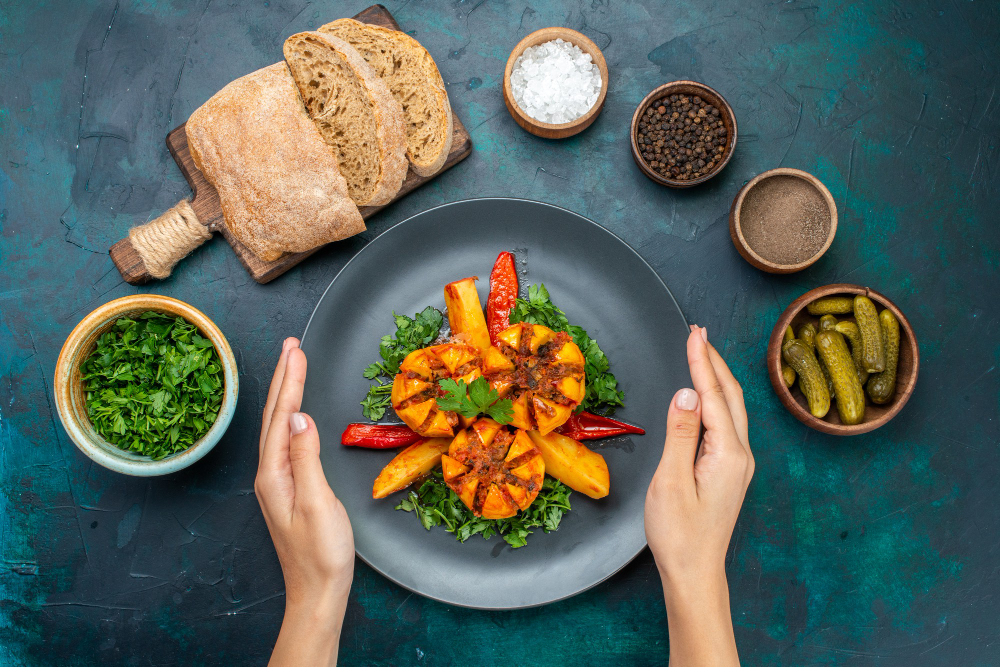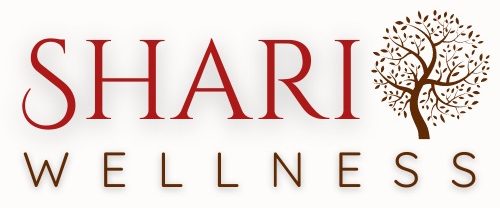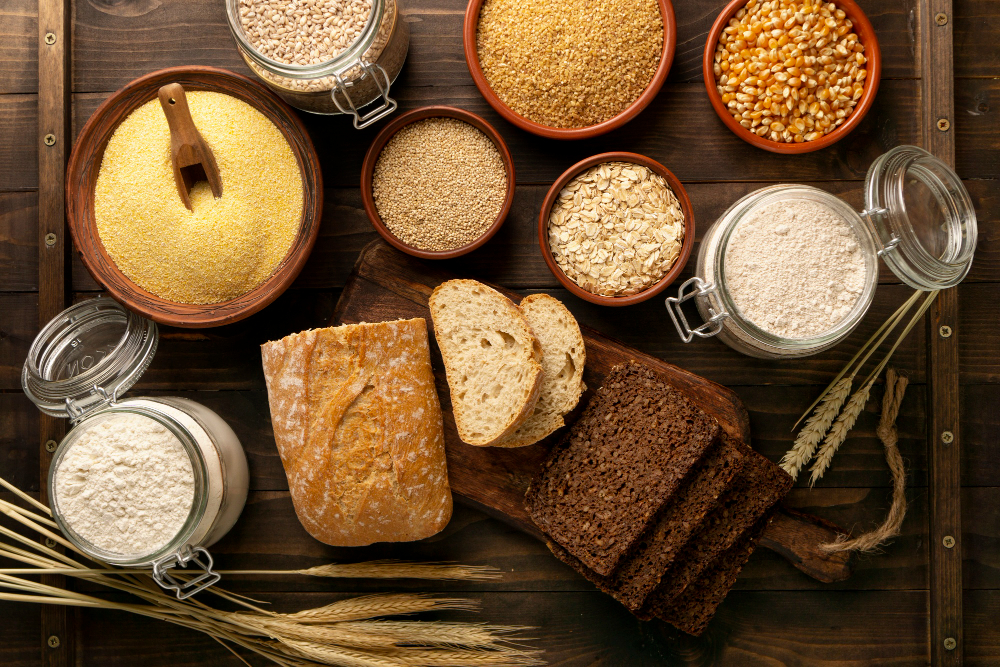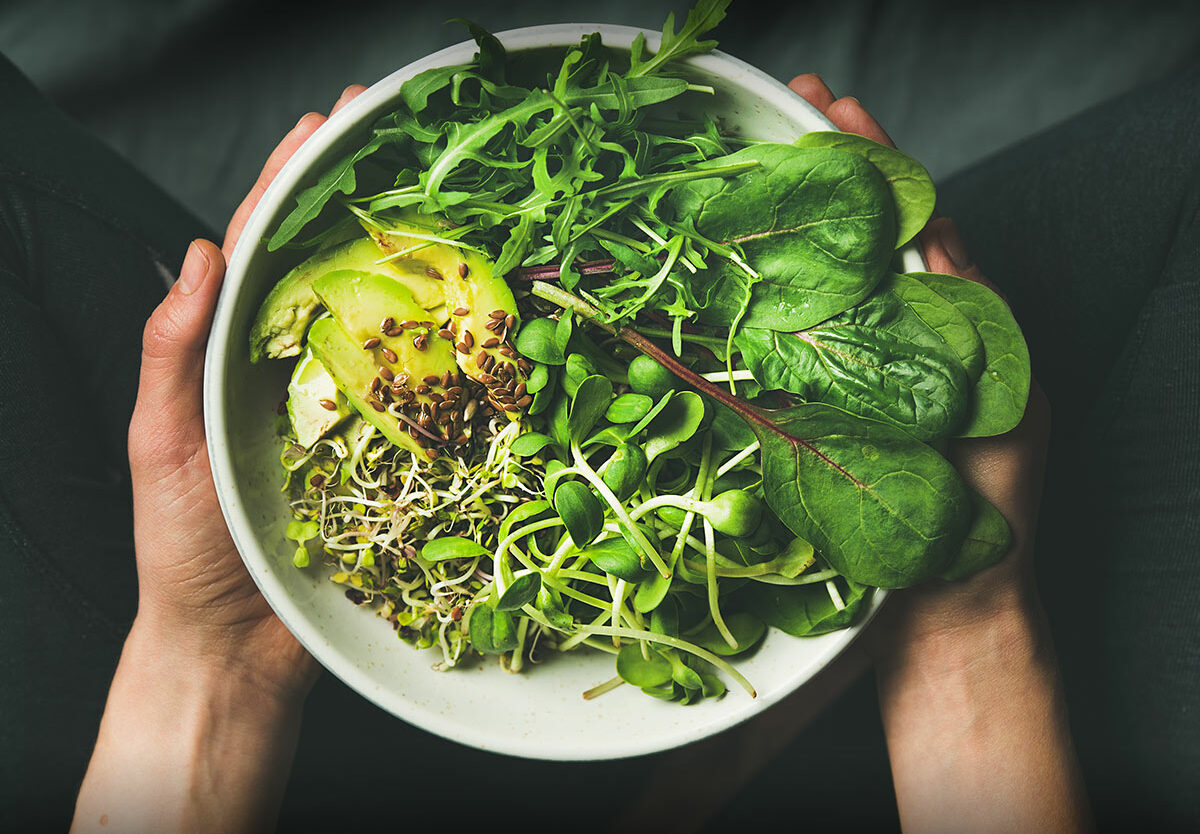
My Plate for VEGAN
Vegan Cuisine Month Vegan Recipe Month
American Vegan Society (AVS) or American Vegan Society February of every year has been designated as Vegan Cuisine Month or #Vegan Recipe Month. To make people understand the value of vegan food. as well as being aware of the variety of eating patterns available today Animal cruelty and environmental issues It also encourages related organizations such as food vendors, educational institutions, religious ceremonies, etc. to take part in this festival.
It is well known that The vegan eating pattern is good for health. especially Contributes to reducing the risk of metabolic syndrome (Metabolic Syndrome) helps reduce body weight. reduce body fat mass and was associated with a lower incidence of cardiovascular disease It also affects the changes in the intestinal microflora. Reduce the risk of chronic non-communicable diseases (Non-Communicable Diseases; NCDs)
to make eating vegan Variety and full of nutrients, the BDMS Wellness Clinic therefore recommends guidelines for proper plating for each meal. By dividing the amount of different food groups in our food plate as follows
1. Fruits and vegetables group (Less processed) 50% of the plate
Vegetables are a very interesting staple food group. Because in addition to providing food value in a variety of vitamins and minerals There are also dietary fibers that help promote the functioning of the digestive system and slow down the absorption of sugar and fat into the body. However, we should choose a variety of colorful vegetables. to get a variety of phytochemicals
Fruits are another food group that are similar to vegetables. Both in terms of nutrients and phytochemicals. The fruit should be chosen to have a variety of colors. Focus on groups with low glycemic index such as cherries, oranges, apples, dragon fruit, rose apples, etc.
2. High protein group , 25% of the plate
When it comes to protein food sources, we tend to think of meat and animal products. But because vegans can’t consume it. Therefore, other food sources that can be substituted for adequate daily protein intake include: Dried legumes (soybeans, peas, chickpeas), white tofu, tempeh, but plant-based proteins often lack essential amino acids. Therefore, we should consume a variety of nuts in order to obtain complete amino acids from various sources.
3. Cereals and unrefined flour: 25% of the plate
Carbohydrates are macronutrients that provide energy. It is like a fuel source to drive our vehicles or our bodies. We should focus on consuming complex carbohydrates such as whole grains like oats, quinoa, buckwheat, whole grains (brown rice, riceberry) or potatoes, as these are rich in vitamins and fiber. which slow down the absorption of sugar and fat into the body
In addition, so that we can get the full nutrition. We should choose to eat good sources of fat. Choose omega-3-rich fats, usually in seeds (chia seeds, flaxseeds), nuts (walnuts, almonds, Brazil nuts), avocados, or vegetable oils. (Soybean oil canola oil Rice bran oil) and sometimes it may be necessary to supplement certain nutrients, such as supplementation with vitamin B12, which is rarely found in plant foods. or vitamin D supplementation which found a high shortage rate However, taking blood vitamin and mineral testing before supplementation This will help to get the right amount of nutrients and prevent the negative effects of too much.
The vegan diet has many health benefits that have been proven by many academics. However, we should choose to eat in the proportion of food groups that are correct and complete. So that we get enough nutrients to meet the needs of the body each day and prevent malnutrition.
Lastly, BDMS Wellness Clinic would like to invite all vegans to create new dishes and share pictures with the hashtag #VeganCuisineMonth. to celebrate this special festival throughout February together
Best wishes from BDMS Wellness Clinic
LINE: @bdmswellnessclinic or https://lin.ee/Z4So1yQ
Reference
- American Vegan Society. Vegan Cuisine Month [Internet]. Malaga NJ: American Vegan Society; 2012 [cited 2022 Dec 21]. Available from https://americanvegan.org/vegan-cuisine-month/
- Trautwein EA, McKay S. The Role of Specific Components of a Plant-Based Diet in Management of Dyslipidemia and the Impact on Cardiovascular Risk. Nutrients. 2020 Sep 1;12(9):2671.
- Appleby PN, Key TJ. The long-term health of vegetarians and vegans. Proceedings of the Nutrition Society. Cambridge University Press; 2016;75(3):287–93.
- Alliance for Natural Health International [Internet]. Chilworth: ANH Food4Health Vegan Guide 2019. ANH International Old Station House; 2019 [cited 2022 Dec 27]. Available from: https://www.anhinternational.org/campaigns/food4health-campaign/anh-food4health-vegan-guide/




Leave a Reply
You must be logged in to post a comment.